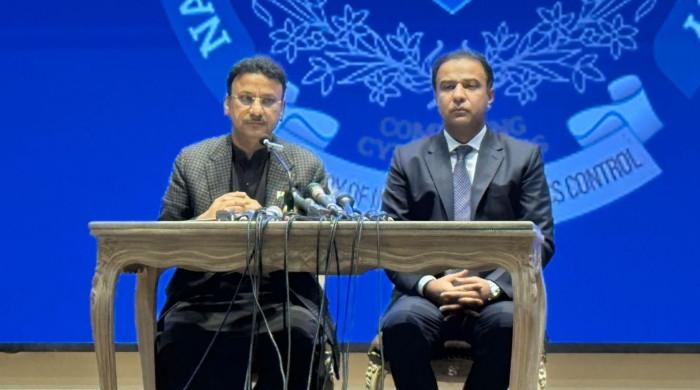Cyclone 'unlikely' to form in Arabian Sea
"If the cyclone is formed, it is expected to move towards Oman," says weatherman
October 09, 2024

Following the reports regarding the presence of a low-pressure area in the Arabian Sea, which might develop into a tropical storm, Chief Meteorologist Sardar Sarfaraz has clarified that there was no chance of cyclone formation.
The National Disaster Management Authority's (NDMA) Emergencies Operation Centre (NEOC) had alerted the concerned authorities about the low-pressure area in the Arabian Sea, saying that it was likely to evolve into a full-fledged storm and hit Pakistan's coastal areas in the coming weeks.
However, the weatherman, speaking on Geo News' programme "Geo Pakistan" on Wednesday said: "There is no formation of low pressure right now as the cyclone is formed at its fifth stage."
The chief meteorologist also emphasised: “Considering the current weather conditions, I don’t think that it will become a cyclone and even if it does, then it is expected to move towards Oman by 70% to 80%.”
Sarfaraz’s statement comes a day after NDMA body’s weather warning regarding the formation of a low pressure system in the Arabian sea.
The body said that this system may evolve into a full-fledged tropical cyclone, with the potential to affect the coastal areas of the country.
Following the NDMA body’s warning, Sarfaraz said that the cyclone has not formed yet.
“Low air pressure may develop in the southeast of the Arabian Sea by October 9 or 10,” he said.
As per the weatherman, southeastern part of the Arabian Sea is close to the southern coast of India.
“The lower air pressure can intensify if favourable weather conditions are met,” he said. However, Sarfaraz added that it is too early to say if the cyclone will hit Pakistan's coastline.
According to Sarfaraz, cyclones are formed in the post-monsoon seasons.
“As compared to the cyclones in the months of May and June, the cyclones in these months have their track mostly move towards the westward,” he said.
Sarfaraz stated this in light of the change in weather conditions usually from four to six days.
He also added that the temperature in Karachi is likely to remain the same till next week.









